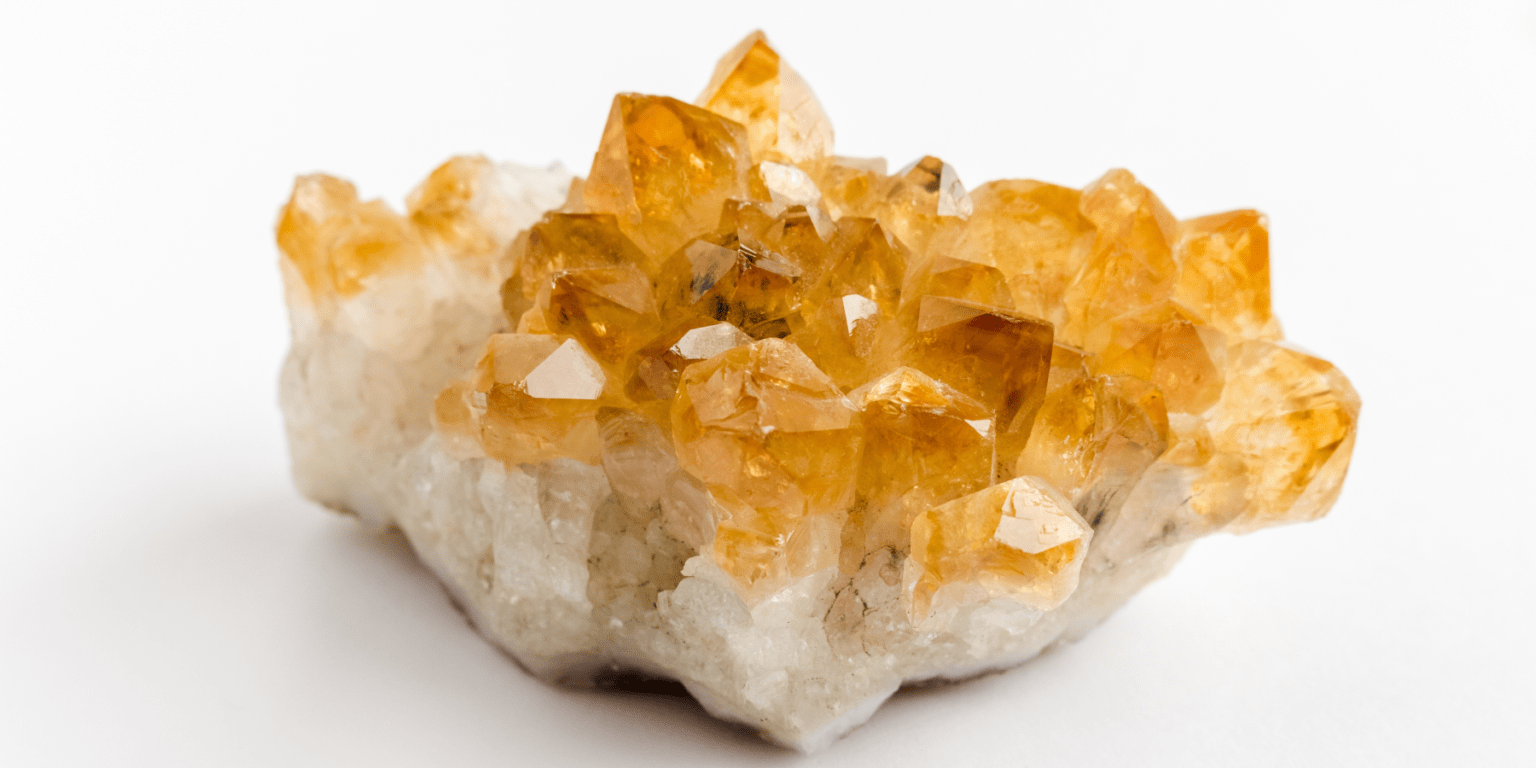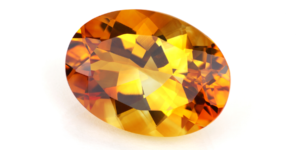What is citrine?
Citrine is a variety of quartz that ranges in color from pale yellow to deep orange-brown. It is a popular gemstone known for its bright, warm hue, and is often used in jewelry. The name “citrine” is derived from the French word “citron,” meaning lemon. Natural citrine is relatively rare, but most of the citrine sold today is actually heat-treated amethyst, which turns yellow when exposed to high temperatures. Citrine is believed to have a number of healing properties, including promoting positivity and abundance, and is said to bring good luck and fortune to those who wear it.
What are the properties of citrine?
Citrine is a semiprecious gemstone that is prized for its sunny yellow to golden-brown color. It is a variety of quartz and is often referred to as “the stone of the sun.” Some of the physical and metaphysical properties associated with citrine include:
Color: As mentioned, the most prized color of citrine is a warm golden-yellow, which is why it is sometimes referred to as “the gold of the mineral kingdom.”
Durability: Citrine is a relatively hard gemstone, with a hardness of 7 on the Mohs scale, making it suitable for use in jewelry.
Healing Properties: Citrine is believed to have a number of healing properties, including promoting positivity and abundance, and is said to bring good luck and fortune to those who wear it.
Chakra Association: Citrine is associated with the solar plexus chakra, which is located just above the navel and is associated with self-confidence and personal power.
Birthstone: As previously mentioned, citrine is one of the birthstones for the month of November.
Symbolism: Citrine is sometimes called the “success stone” or the “abundance stone” because of its association with prosperity and success. It is believed to promote abundance and manifestation in all areas of life.
These are just some of the properties associated with citrine. It is important to note that the properties and beliefs associated with gemstones can vary based on cultural and personal interpretations.
Where does citrine comes from?
Citrine is a variety of quartz that is found in various locations around the world. Some of the major sources of citrine include:
Brazil: Brazil is one of the largest producers of citrine, with many high-quality specimens being mined in the state of Minas Gerais.
Madagascar: Madagascar is another major source of citrine, with many large and high-quality specimens being found there.
Spain: Spain has been a source of citrine for centuries, and is known for producing some of the finest specimens of the gemstone.
Russia: Russia is also a source of citrine, with some of the finest specimens being found in the Ural Mountains.
Bolivia: Bolivia is another major source of citrine, with many high-quality specimens being found in the region of Anahí.
These are just a few of the places where citrine is found. It is important to note that while natural citrine is relatively rare, most of the citrine sold today is actually heat-treated amethyst, which turns yellow when exposed to high temperatures.
Where can natural citrine be found?
You can find natural citrine at various locations, including:
Gemstone shops: Some specialty gemstone shops carry natural citrine, and you can often find high-quality specimens there.
Online retailers: There are many online retailers that specialize in gemstones, including natural citrine. This can be a convenient option if you are unable to find what you are looking for locally.
Rock and mineral shows: Rock and mineral shows are a great place to find natural citrine, as well as other gemstones and minerals. You can often find a wide variety of specimens at these events, and can purchase directly from the vendors.
Mining locations: If you are interested in obtaining natural citrine directly from the source, you may be able to visit one of the major citrine-producing regions, such as Brazil, Madagascar, or Bolivia, and purchase directly from the miners.
It is important to note that when purchasing natural citrine, it is important to purchase from a reputable source to ensure that you are getting a genuine product. You can also have the citrine independently tested to verify its authenticity.
How to harness the properties of citrine?
Citrine is often used to harness its metaphysical properties, including promoting positivity, abundance, and good luck. Here are a few ways you can use citrine to tap into its properties:
- Wear citrine jewelry: Wearing citrine jewelry, such as a pendant, ring, or earrings, is a simple way to harness the properties of the gemstone. You can wear the jewelry as a reminder of the positive energy and abundance you wish to bring into your life.
- Place citrine in your home or workspace: Placing citrine in your home or workspace can help to promote positivity and abundance. You can place a piece of citrine on your desk, in your living room, or in any other room where you spend a lot of time.
- Meditate with citrine: Holding a piece of citrine while meditating can help to bring its properties into your life. During meditation, focus on the positive energy and abundance you wish to bring into your life, and visualize the citrine amplifying this energy.
- Use citrine in gemstone grids: Gemstone grids are arrangements of stones that are placed in a specific pattern for spiritual and healing purposes. You can use citrine in a gemstone grid to promote positivity and abundance in your life.
It is important to note that while these are some popular ways to use citrine, the way you use it will depend on your own beliefs and preferences. The key is to find a way that feels right for you, and to focus on the positive energy and abundance you wish to bring into your life while using the gemstone.


